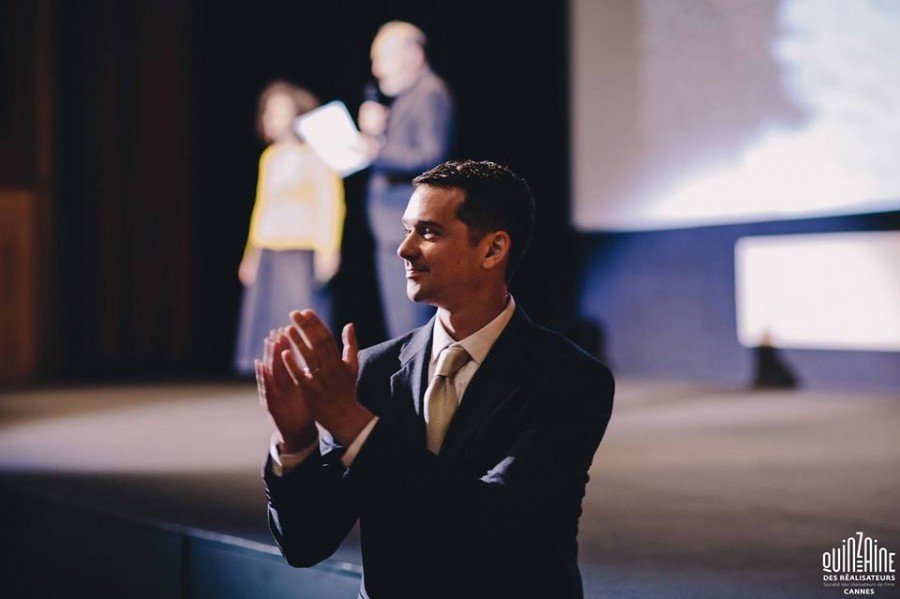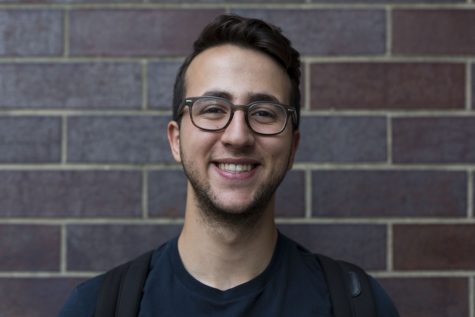Alum’s Road From Tisch to Cannes
Tisch alumnus, Jeremy Saulnier’s upcoming film “Green Room” has already been positively reviewed by many.
April 11, 2016
Tisch alum Jeremy Saulnier made waves at the 2013 Cannes Film Festival with the revenge thriller “Blue Ruin.” On April 15, Saulnier’s follow up “Green Room” will be released, where a punk rocker (Anton Yelchin) witnesses a murder at a bar run by Neo-Nazis, whose leader (Patrick Stewart) intends to cover up the crime. WSN sat down with Saulnier to discuss violence in film and how Tisch impacted his filmmaking career.
WSN: What attracted you to the story of “Green Room?”
Jeremy Saulnier: I had the momentum from “Blue Ruin.” I had this deep well of experience in the punk rock world, and I wanted to tell a story that would blend everything together and offer me a little bit of a break. “Blue Ruin” was an emotional journey for everyone involved. It was amazing to have it premiere at Cannes. It was a very personal story. It had a little dark comedy there but it was very tragic. It was also atmospheric, and with “Green Room” I was like, “Let’s take that.” There were moments in “Blue Ruin” that were most effective for the audience, and that was the tension. There’s a night invasion scene, and the audience would go crazy — that’s what people would talk about. I thought, “Let’s build on that.” I don’t want to replicate “Blue Ruin” but I wanted to extract that amazing physical response that I’m getting from people, that I can feel in these darkened theaters.
WSN: Violence places such a big part in both of your films. Why do you think that’s the case?
JS: My movies come across as hyper-violent but the thing is, the body counts are minimal compared to a lot of other films. What I do is that I make sure when there is a loss of life on screen it hurts real bad for the audience too. I think it’s more responsible to show full frontal blood letting if there’s a purpose to it. There’s a turning point in “Green Room” where — it’s the most brutal point in the movie when the audience gasps aloud invariably, might get a walkout or two — to watch it [the violence] with [the band mates] where we see them transition from innocent kids into killers.
WSN: What it was like working with Patrick Stewart?
JS: His first day, we were shooting his big intro and it was my worst day on set. We had last minute changes to the schedule and budget. I was kind of reeling from that and I nearly botched his intro completely. We had a nice talk the next morning and he was really kind and made me feel so much safer about everything. The whole production turned for me there. I didn’t feel intimidated, or that I had to impress, or that I had to pretend I was this fearless leader when I was vulnerable. He gave me the power to just tell the story.
WSN: How do you feel Tisch prepared you for your professional career? Was anything lacking?
JS: I felt I wanted a little more on set observation time, that’s the only thing I felt was lacking. You’re with students, but shit, I can learn as an observer. If I was allowed access to bigger movie sets I could really rapidly increase my learning curve to do what I had to do on my sets. I have a lot of classmates from Tisch and they are my collaborators today. They weren’t the people I was hanging out with when I was at film school, but there’s definitely a community there.
A version of this article appeared in the Monday, April 11 print edition. Email Ethan Sapienza at [email protected].




























































































































































